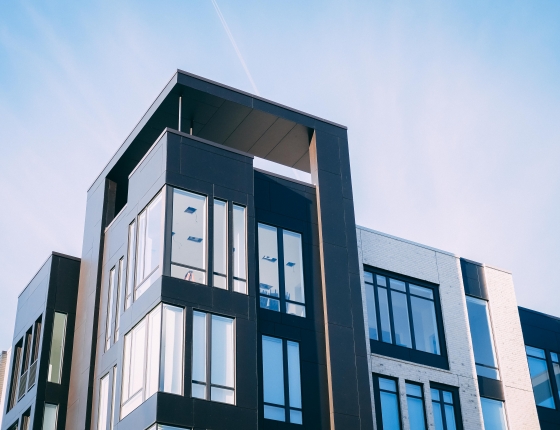Why This Research Is Needed
The Low-Rise Multifamily Energy Study will improve understanding of energy code practices in low-rise multifamily dwellings. Previous research has shown that energy code for multifamily dwellings straddles that of single-family homes and commercial spaces, and is interpreted differently across jurisdictions. Because of the different interpretations, energy code compliance is more complicated than it needs to be.
Project Process and Expected Outcomes
This project will collect information on building energy design and construction characteristics in new multifamily constructions. Working with Ecotope and Slipstream, CEE will collect construction data from 25 low-rise multifamily buildings in Minnesota, and complete air tightness testing on 14 of them. Slipstream will collect this data in Illinois, and Ecotope will collect it in Washington and Oregon.
Researchers will use the construction data for low-rise multifamily buildings in each state to evaluate current energy efficiency levels for numerous design elements. Analysis will also look at the potential energy savings that could be realized by reaching certain industry standard efficiency levels. The findings will provide valuable information to guide industry professionals and energy program planners.
The air tightness testing results will help resolve the current industry divergence between two air tightness testing approaches: the compartmentalization type test and the whole building envelope type test. To do this, researchers will:
-
Determine whether a relationship between these two tests exists for the Common Entry and Garden Style multifamily building types
-
Provide an appropriate and practical envelope air tightness test protocol(s) to determine energy code compliance for multifamily buildings
-
Provide guidance for the development of language addressing envelope tightness in model energy codes aimed at the low-rise multifamily sector
-
Assess the energy impact of air tightness testing using the protocols in this study
The research team’s intention is for the outcomes of this study to be useful to other state and regional organizations to quantify energy efficiency opportunities across the country.
Project Info
Objectives
Collect data on low-rise multifamily buildings that will be used as a baseline to assist in energy code compliance.
Non-Energy Benefits
This research is the first step in standardizing multifamily energy code around energy efficiency, which would benefit building owners, designers, contractors, and occupants.
Scope
Newly constructed low-rise multifamily buildings in Minnesota, Illinois, Oregon, and Washington.
External Resources
Energy Efficiency Field Studies (U.S. Department of Energy)
Related Reports and Tools
